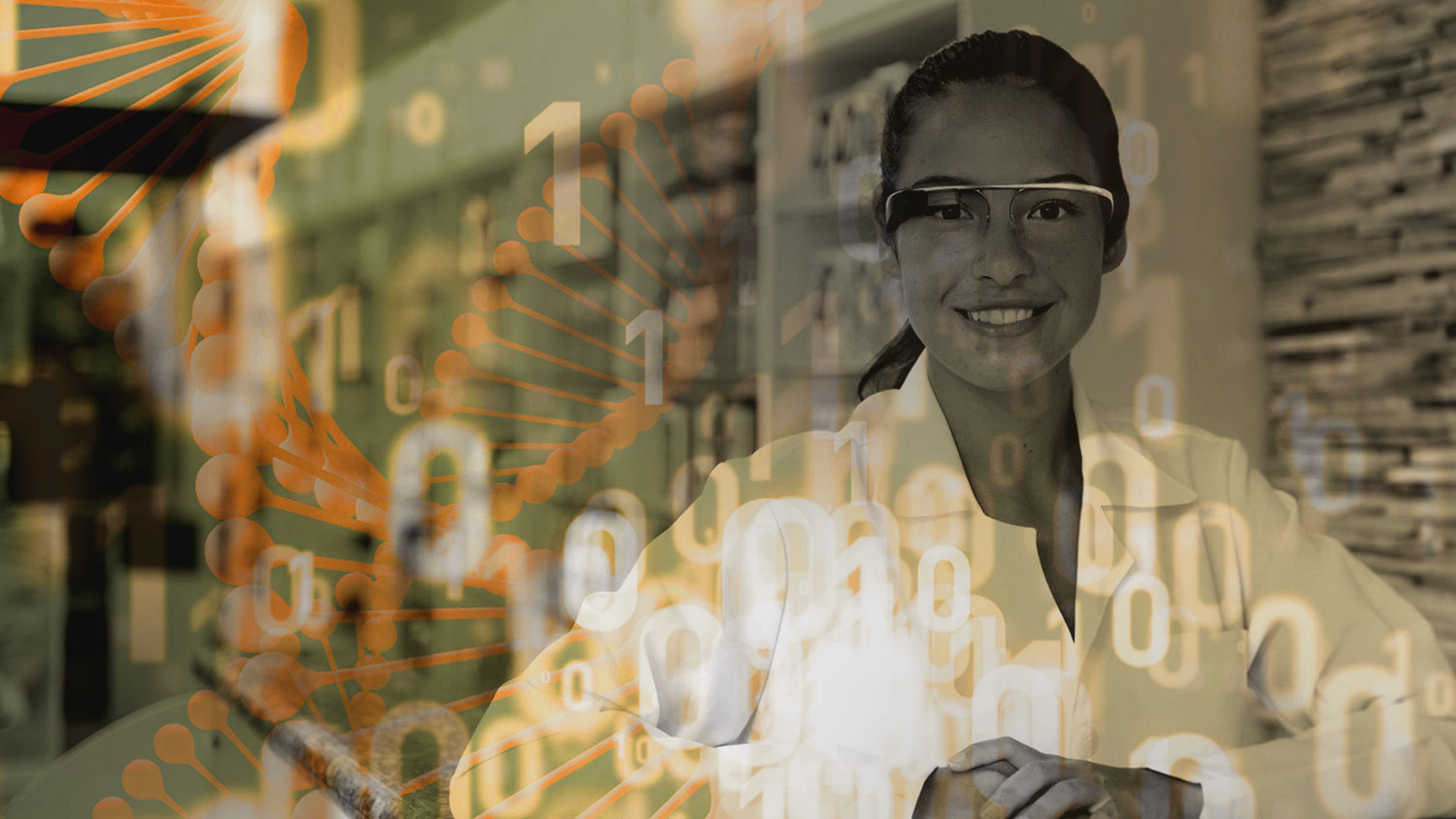Augmented reality (AR) or 'smart glasses' may not have taken the leisure market by storm, but it is making waves in industry.
This technology offers real value to drug discovery in some quite surprising places:
- AR benefits data visualising and warehousing
- AR improves freezer management
- AR boosts data quality
- AR manages lab automation and labware
- AR improves audit trail security
Augmented reality may benefit biotech most of all!

1. Augmented reality benefits data visualising and warehousing
Using augmented reality for data visualisation grabs headlines, such as the exciting news that scientists at Sygnature Discovery could soon be rotating virtual molecules in three dimensions, while still being able to see and interact with their colleagues. They have been applying augmented reality (AR) to drug discovery and are now at the prototype stage with a solution to boost collaborative design.
Dr Steve St-Gallay, Principal Scientist at Sygnature, has said : ‘AR is different – it brings the virtual world into the real world, along with the people around you. It liberates you from the computer screen. If you want to write notes, for example, you can still see your pen and paper. You can’t do that in a VR world.’ (Read the blog here)
However, data visualisation is not the only improvement from using augmented reality in the lab. It offers a huge boost to sample security, and thus data integrity too. Titian Software have developed Mosaic AR as an easy way to take advantage of this, using smart glasses linked to sample management software to guide lab users’ activities, especially when picking and placing from manual stores.
This sounds trivial by comparison to manipulating 3D molecules but consider: warehousing companies like Amazon are moving to augmented reality glasses because of the time savings, reduced error rate and shorter training times.
Toby Winchester, Titian Software, says: “We realised that, although the scale isn't the same as an Amazon warehouse, the operations to track and manage samples are extremely similar and the need to avoid mistakes is very relevant. So is the point about liberating you from a computer screen – you need to be able to move freely and use your hands.”
2. Augmented reality improves freezer management
With a constant connection to the inventory software via Wi-Fi, Mosaic AR glasses allow you to search for an item and then be guided straight to the right freezer location. This means:
- no more forgetting which rack it was in
- no more fumbling around with samples looking for the right one
- no more compromising sample integrity by leaving the freezer door open for too long
Alternatively, when storing samples, Mosaic AR can take you straight to an empty shelf at the appropriate temperature for your sample type.
Toby continues: “As well as saving time when picking and placing manually, augmented reality helps to avoid mistakes. For instance, you don't want to pick and thaw a tube, take it over to where it's needed, find out that it's the wrong one, then have to go back down to your basement to get the correct tube. Barcode scanning using the AR glasses confirms the sample's identity, preventing incorrect identification.”
3. Augmented reality boosts data quality
Mosaic AR means every user’s actions can be automatically recorded and updated in the LIMS software, keeping inventory and audit information aligned and available in real-time.
As the whole drug discovery screening cycle is data driven, catching and removing errors improves data quality and has huge cost and efficiency benefits across the many groups involved in it. Automatically recording the audit trail means that the data stewardship is even tighter.
4. Augmented reality manages lab automation and labware
AR is not just about picking and placing samples. Mosaic AR can be used to look at laboratory automation, such as liquid handlers, and guide the operator on what's currently running and what can be run next. So, even if the liquid handler is not part of a fully automated workflow, you gain the efficiency benefits of integrating it via Mosaic.
Focussing on the barcode of any labware item will provide information on where it should be used next. It also will flag up when a sample is hazardous or has passed its expiry date, avoiding errors from testing something that may have degraded or no longer has permission to be used.
By alerting the user to safety information when picking samples, the user can take the right steps to ensure they handle it and dispose of it safely and in line with set procedures.
5. Augmented reality improves audit trail security
Mosaic sample management software is already 22 CFR Part 11 compliant. However, because the AR glasses are always connected to the software by Wi-Fi, all actions undertaken whilst wearing the glasses can be automatically tracked.
- This removes the burden of recording tasks from the lab user
- It also improves the regulatory compliance of a process, as there is no doubt which actions have been carried out
- Further still, the whole process is in real-time so every action taken is immediately part of the audit trail and can be viewed by other users.
Augmented reality may benefit biotech most of all
While effective sample management doesn’t grab headlines, it does underpin the whole drug discovery screening process. Titian has introduced AR to its Mosaic sample management software to make manual lab processes easier to perform, more efficient and to offer greater sample security.
The biotech sector is likely to realise the biggest benefits from augmented reality, because it tends to rely on manual freezers and standalone lab automation. Mosaic AR is an easy way to bring the benefits of integration to these disparate processes, as well as improved traceability and greater regulatory compliance.
Ultimately, augmented reality doesn’t have to change the way you work or replace processes to suit the AR, it’s about improving the processes you already follow.
